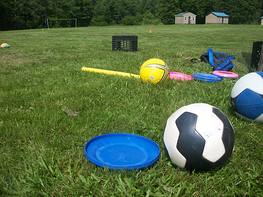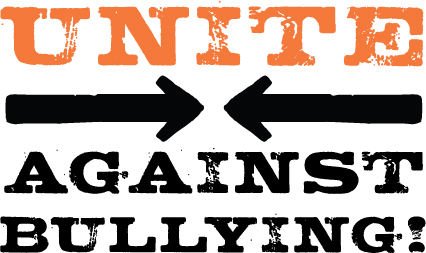This post was written by NobleHour Special Contributor Natasha Derezinski-Choo.
We have a responsibility to keep the earth healthy. Here are some simple steps you can take each day to improve the environment, and in addition, some ideas and service projects for sharing these changes with your community.

Skip Paper AND Plastic: One of life’s everyday questions: should you take your groceries home in a paper or plastic bag? It’s one of those decisions we routinely make at the check out line, and it’s an example of how our everyday choices can impact the environment. The truth is neither paper nor plastic is better for the environment. A better alternative is to purchase a few reusable grocery bags. These are inexpensive and can be found at almost any grocery store. Stashing a few of these in your car and remembering to bring them into the store with you is one a simple, sustainable way you can be more environmentally conscious.
Service Project Idea: Educate members of your community about the impact of paper and plastic bags on the environment, and encourage them to use reusable bags as an alternative.

-
Reduce Junk Mail: According to 41pounds.org, “The average adult receives 41 pounds of mail each year. 44% goes to the landfill unopened.” Each year, this process results in 100 million trees cut down, 20 billion gallons of water wasted, and 2 billion tons of carbon emitted to produced and transport junk mail. Adding your name to opt-out lists is a simple way to reduce the amount of junk mail you receive. You’ll save time and trees while doing so.
Community Initiative Idea: Work with your local community to see how you can reduce junk mail. Encourage your city to organize a mail preference service so residents can easily opt out of junk mail. Read more about how some cities are helping the environment by reducing junk mail here.
-
Conserve Water: Water is a precious resource. The water crisis affects the quality of life of millions of people. In developing countries where clean water is scarce, women in particular are impacted because they need to walk for hours to collect clean water and carry it back. This deprives them of time that could be used for education or work. In addition, once water is polluted with chemicals from manufacturing plants and industrial farm fertilizer runoff, it is difficult to separate the clean water from the pollutants. Water.org has more information about the importance of clean water. Conserving water is not just about appreciating having clean water; it is also an important step in making sure our planet can continue to sustain the human population. Imagine a day without water, and you’ll see how important it is to preserve this resource for generations to come.
Improving Your Habits: Take simple small steps in your routine to reduce your water consumption. This might entail taking shorter showers, watering plants only when needed, or plugging the sink to rinse your razor instead of letting the water run. Find over 100 more water-saving tips at wateruseitwisely.com.
-
 Recycle: Recycling seems like a no-brainer when it comes to sustainability. The National Park Service reports that “Americans represent 5% of the world’s population, but generate 30% of the world’s garbage.” Reducing waste improves water and air quality, saves money, and reduces the effects of global warming.
Recycle: Recycling seems like a no-brainer when it comes to sustainability. The National Park Service reports that “Americans represent 5% of the world’s population, but generate 30% of the world’s garbage.” Reducing waste improves water and air quality, saves money, and reduces the effects of global warming.
Service Project Idea: While recycling is good, not all materials can be recycled. This depends on the capabilities of your local recycling plant. When the wrong plastic is found in a load of recyclables, the whole batch is sometimes discarded, which defeats the purpose of recycling. Check with your local government and inform yourself on what is and is not accepted in recycling bins. Then, take this information to your community by educating people on how to maximize the benefits of recycling.
-
Build Bat Houses: Bats are a great addition to the environment and are a good pest controller—particularly against mosquitos. Building a bat house that mimics a bat’s natural habitat helps preserve their livelihood. Bat house plans are easy to find online. Eparks.org and the National Wildlife Federation have easy-to-follow instructions on building bat houses.
Service Project Idea: Construct bat houses around your community in parks and schools to teach students and neighbours about the importance of bats in the ecosystem.

Create Birdhouses: The same idea applies here as with bat houses. Restoring birds’ habitats is a great way to improve your local environment. Here are some resources about starting birdhouses in you backyards, neighborhoods, parks, and schools: http://www.freebirdhouseplans.net/ and http://www.birdsforever.com/.
Service-Learning Application: Incorporate this lesson into classrooms by studying the necessities of nesting and the types of birds found in your area. Then, set up a birdhouse so that students can see these birds first-hand.
-
Plant Trees: Trees are important to the environment. They clean the air and produce oxygen for us to breathe. Trees are often cut down to build buildings, parking lots, and roads, so restoring trees is important to any environment.
Service Project Idea: Organize a tree-planting day where you and a group of volunteers plant trees in your community.
What do you think is the most important reason to preserve our environment? Share your environmentally-friendly service-initiatives on NobleHour to connect with volunteers, schools and organizations interested helping with your cause.
Image sources:http://www.flickr.com/photos/foldablebags_com/4527744948
http://www.flickr.com/photos/jaaronfarr/2057913010
http://www.flickr.com/photos/intelfreepress/7949833732
http://www.flickr.com/photos/hankinsphoto/6831816406














 Saturday’s Service-Learning Ambassador Training was focused on educating students on how to be Service-Learning Ambassadors. Of the 25+ high schools in Guilford County, each school was invited to send up to five of their most dedicated students to learn about advocating for service learning among their peers. Additionally, schools could send two students who’d already been trained as Service-Learning Ambassadors to facilitate the training and workshops.
Saturday’s Service-Learning Ambassador Training was focused on educating students on how to be Service-Learning Ambassadors. Of the 25+ high schools in Guilford County, each school was invited to send up to five of their most dedicated students to learn about advocating for service learning among their peers. Additionally, schools could send two students who’d already been trained as Service-Learning Ambassadors to facilitate the training and workshops. 
 members against bullying. They started and have been celebrating National Bullying Prevention Month each October since 2006, and in 2011 created
members against bullying. They started and have been celebrating National Bullying Prevention Month each October since 2006, and in 2011 created 





